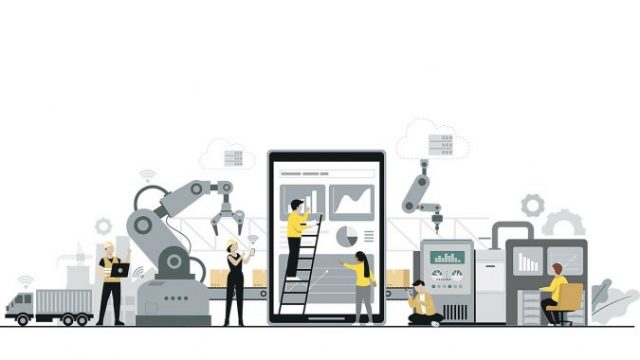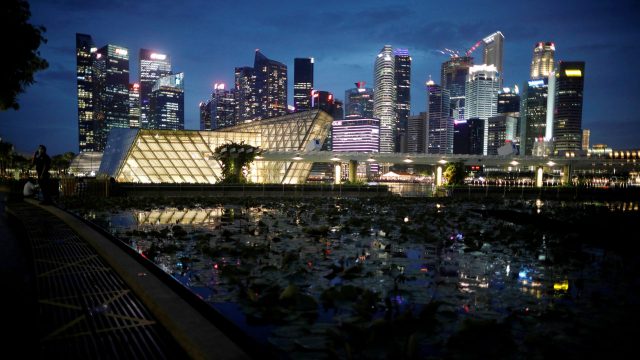We oftentimes hear the term “digital readiness” brought up and bounced around when talking about the direction the country wants to take in terms of developing its digital landscape. We hear about innovations like 5G connectivity, cloud computing, even artificial intelligence. However, all of these beg the question: Are we digitally ready? What does digital readiness truly entail?
As Bill Luz, Chief Resilience Officer of the Philippine Disaster Resilience Foundation, put it during a recent webinar organized by the Liveable Cities Challenge, “even as it disrupts life, the pandemic has accelerated digital adoption among Filipinos. Out of necessity, more people and organizations have shifted to digital transactions — telehealth, e-payments, e-commerce, and other digital-enabled activities. As we move towards recovery, this digital transition is expected to continue and become a permanent fixture in our daily lives.”
So far, the Philippines has already taken major steps in improving the country’s digital readiness to prepare it for this digital transition. For instance, the Department of Information and Communications Technology (DICT) had launched initiatives like the National Broadband Plan and the Free WiFi-For-All Program to provide internet access even to the farthest communities in the country.
To further bolster such services and activities, The DICT initiated the long awaited Joint Memorandum Circular with the Anti-Red Tape Authority, the Department of the Interior and Local Government, the Department of Human Settlements and Urban Development, the Bureau of Fire Protection, the Department of Public Works and Highways, the Civil Aviation Authority, the National Telecommunications Commission, the Department of Health, and the Food and Drug Administration which streamlined the extremely bureaucratic permitting processes for the accelerated construction of digital infrastructure. The local telecommunications companies, in turn, responded enthusiastically by ramping up their telecom tower and fiber connectivity roll-out.
All these telecommunications industry investments were not in vain as significant improvement in our country’s internet speeds were reported by Ookla. Average download speeds in the Philippines for fixed broadband internet is now at 66.55 megabits per second (Mbps), much higher than the 59.73 Mbps recorded the month prior.
These developments were supported by the IMD World Digital Competitiveness Ranking 2020 Report which placed the Philippines at 10th highest for telecommunications investment which was led by private telcos.
That said, despite this aggressive digital infrastructure expansion, the same report showed that the Philippines’ digital competitiveness ranking dropped to 57th out of 64 economies from its rank of 55th in 2019. The study showed that under the knowledge pillar, the Philippines plummeted to 62nd after ranking 51st last year.
According to IMD Senior Economist José Caballero, the slip in the Philippines’ ranking reflects a weakening of the talent, training, and education sub-factors under the knowledge pillar. This shows that to be digitally ready, we need to invest not just in infrastructure and technology but also in the skills and knowledge of our people.
The amazing advancements in technology may have dazzled us to focus so much on the technological aspect of digital transformation that we may have overlooked the pre-requisite of upskilling and knowledge-building of our workforce.
Digital literacy, which means having the enabling skills to learn, work, communicate, and process information with digital technologies, must be integrated in the basic education system. For this to happen, schools must be re-tooled, teachers’ skills upgraded and given access to the best content to effectively deliver quality education to learners. This is the foundation to creating a digitally skilled workforce that can harness frontier technologies such as robotics, biotechnology, and artificial intelligence. A digital competitive edge that will boost economic recovery.
The education sector was one of the hardest hit by the pandemic, with protracted lockdowns forcing the sudden shift to non-face-to-face modes to continue classes. Many schools that could not cope with the disruption have stopped operations. Other educational institutions that had the resources were able to shift to online classes but the adjustment for the faculty and students is understandably challenging.
To move forward, there must be on-the-ground collaboration of schools, the national and local government, and the private sector to bring the education ecosystem up to speed in connectivity, ICT equipment, and digital skills for e-education. Digitalization of school’s systems will actually result in more efficient operations and savings that can be rechanneled for more scholarships and improvement of facilities.
The government needs to harness the expertise and experience of the private sector to develop the country’s digital competitiveness in an ever-evolving digital global economic environment.
As I had stated in the forum, technologies, tools, and infrastructure can be bought. However, what cannot be bought are the talent and the skills needed by the next generation so that they may be able to efficiently wield the power of technology.
What we need is a people-centric approach that will harness the benefits of digital technology as power tools to prosper in a rapidly evolving digital landscape. Digital readiness is about empowering people and adopting a developmental governance mindset.
To leverage the opportunities of digital technologies for public health and the economy, there has to be openness to constant innovation of processes and policies to promote an environment that has moved past passé governance models and stagnant regulations.
A new culture of leadership, learning, working, and living with technology, inspired by the prospect of limitless possibilities for inclusive growth and sustainable prosperity is an exciting vision that we must all aim to achieve.
Victor Andres “Dindo” C. Manhit is the President of the Stratbase ADR Institute.












